New Sharrow MX4-Blade Prop Out-Performs Mercs' Best at WOT
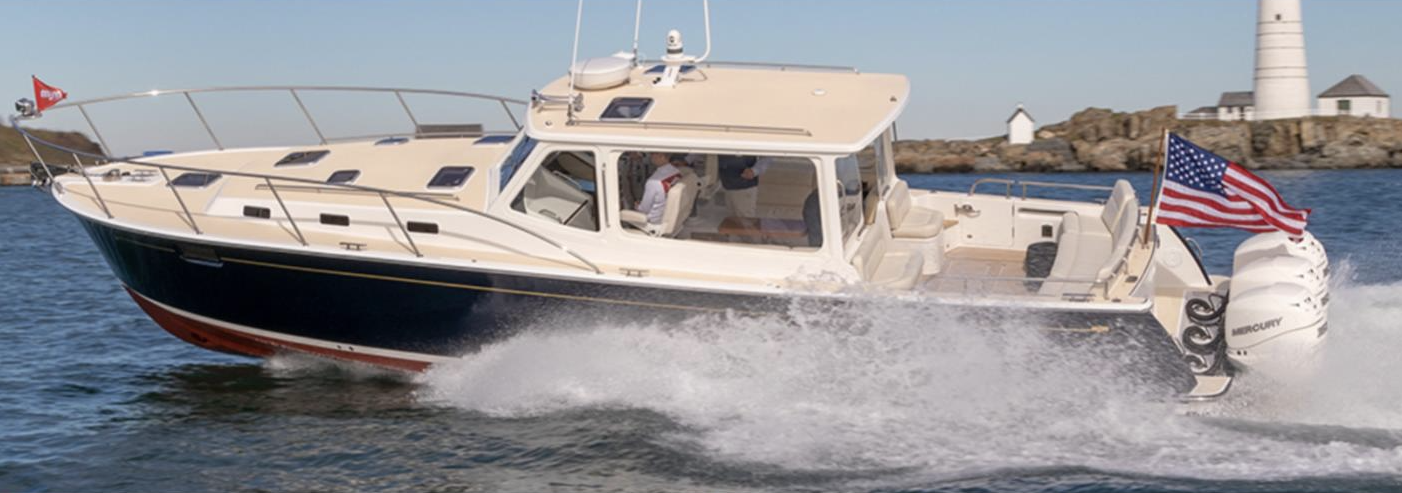
In a test conducted by MJM and Sharrow Marine last week on the MJM 43z powered by triple 300-hp Mercurys, new Sharrow MX4 props took the boat to a top speed of 47.4 mph. Then the same boat was tested with Mercury Enertia Eco props — generally considered to be among the best conventional props on the market. It registered 44.6 mph — 2.8 mph, or 6%, slower than with the Sharrow props. Sharrow Marine considers this a landmark test because its new MX4, 4-blade props were faster than conventional 3-blade props at every RPM from idle to WOT.
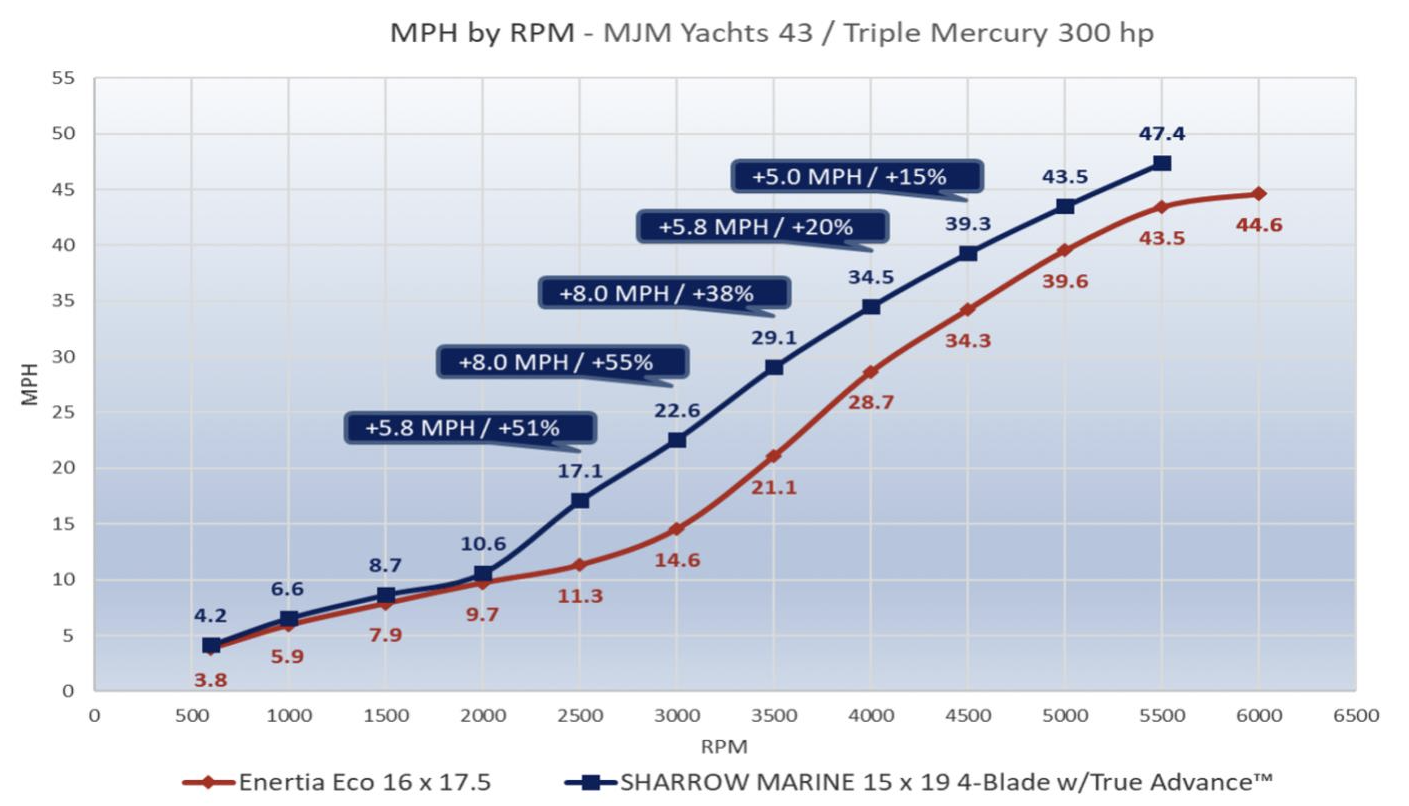
As seen in the remarkable chart above, the MX4 Sharrow props were .4 mph at idle to 8 mph faster at 3000 and 3500 RPM than the conventional Enertia Eco props. The prop geometry was also noticeably different — the standard Mercury props were 16” x 17.5” pitch 3-blade props and the MX4 props were 15” x 19” 4-blade wheels. The Mercury props tested are what are recommended by the manufacturer for this application on the MJM 43z.
This was a surprising test result for at least three reasons: 1) Typically, Sharrow props are a bit slower at the top end than well-designed conventional props; 2) 3-blade standard props are almost always faster at the top end than the 4-blade variety; 3) the Mercury Enertia Eco prop had a good reputation for efficiency in the mid-range, where most people cruise, but that’s also the Sharrow prop’s sweet-spot — but the Sharrow also went faster at the top end.
Striving to Be the Best
The Enertia Eco prop was introduced to much fanfare in the spring of 2014 and it was said to be designed for high-horsepower outboard-powered boats and would deliver an increase in fuel economy of 10% at cruising speeds. At the time, BoatTEST confirmed that this was true in data we analyzed. For years, the Mercury Enertia Eco prop was generally regarded as one of the best prop designs on the market.
MJM’s Economy Culture
From the day of its founding in 2002, MJM’s raison d’etre was always fuel-efficient cruising, not blinding top speed. That’s why the company began life by powering with lightweight inboard diesels, the most fuel-efficient internal combustion engine type available. Diesel also had the advantage of having high torque which can get a boat on plane faster. But after 15 years, in 2017, MJM management decided not to fight the outboard trend and jumped aboard the bandwagon with its MJM 35z.

Powered by twin 350-hp Mercurys, the 35z was a signal of things to come in the industry because MJM — of all builders — was the most fanatical at the time about efficiency and being a good global citizen. The company also hoped to tap into a new market: newly arrived yachtsmen moving on up. “...friends and family who are used to center consoles and sportboats will find the seating comfortable and the shade of the hardtop welcome,” we wrote in our Captain’s Report on the 35z in 2018, the last MJM yacht we were asked to test.
MJM started with Mercury engines because, in the words of company CEO Peter Johnstone, “We could see where they were going.” Prior to last week, Johnstone told us he had been quite “happy” with the performance of the Mercury props on his boats.

Sharrow MX4
So, what changed? The answer lies in the design of the new MX4 props, which are the latest iteration created by the highly regarded engineers in the Sharrow brain trust. With four years of comparative test data on hundreds of boats, engines and props, this summer Sharrow was able to take its basic design to the next level, we are told. “We designed this prop specifically for applications such as the MJM 43z, which are relatively heavy cruising boats that need high horsepower for good performance,” CEO Greg Sharrow told us in a post-test interview.
“Because of the complexity of our design, we can literally change thousands of aspects of the prop’s shape on the computer to produce a propeller that meets a customer’s specific application, unlike conventional prop designs,” Sharrow said. “It’s like comparing a manual typewriter with computer.”
Although the MJM 43z express cruiser is heavier than a lot of the center consoles where Sharrow props are most popular, she is remarkably light for a 43’ (13.1 m) cruising boat. At 17,949 lbs. (8,158 kg), she’s anywhere from 15% to 40% lighter than other boats in class. Still, when comparing her weight to that of boats outboard engines were originally designed for, she is heavier.
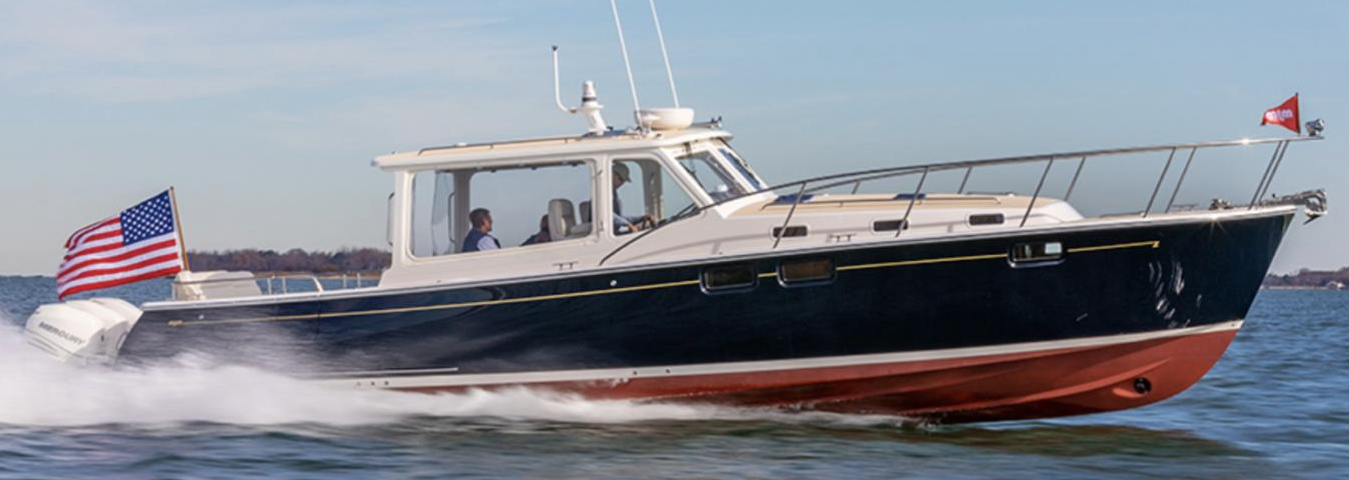
Despite her WOT speed with conventional props, the folks at MJM and Sharrow Marine knew that the boat could do better. After all, outboards are notorious for their relatively high fuel consumption and the Sharrow props had proved to be significantly more fuel-efficient in smaller boats. With three outboards on the transom weighing a total of 1,800 lbs. (818 kg) — 10% of the vessel’s weight — Greg Sharrow told us he realized that the 43z needed to have the stern lifted when getting on plane and that’s one thing the new 4-blade MX4 was designed to do.
“This is our newest product and is ideal for heavier outboard-powered cruising boats,” said Sharrow. MJM is the first builder getting the new MX4s this coming summer for use on MJM’s 2025 model year boats. “It’s a break-through product,” says Peter Johnstone. Currently, MJM is the only builder scheduled to get delivery of the MX4 as OEM equipment.
End of the Cretaceous Period
“High horsepower and high speed is becoming a dinosaur and we like to be ahead of the curve,” Johnstone told us. And, indeed, the Johnstone family has done a very good job of being ahead of the curve and some might suggest that it has even created the curve in the first place in some cases. The first MJM launched in 2002 was essentially a genteel dayboat in the Downeast style, with accommodations primarily for weekending. Now dayboats are being built by dozens of brands all over the world that look very different from the MJMs, but are nearly identical in function.
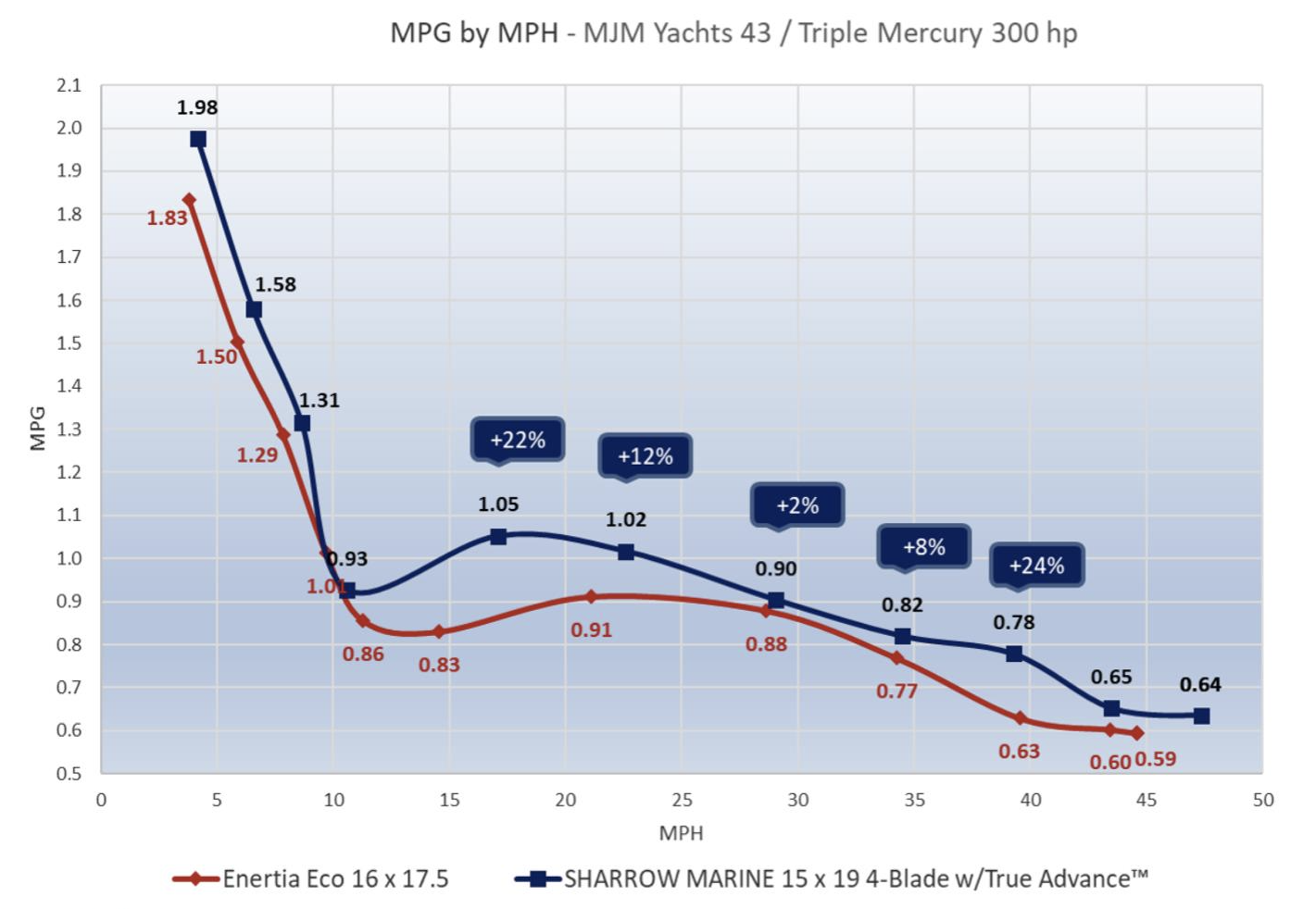
The 24% Solution
Like the speed chart of the new MX4, the MPG graph above is also remarkable. Once considered the benchmark of efficient propulsion in the mid-range, it looks as if the Enertia Eco has been replaced by the Sharrow MX4. Not only did the MX4 outperform the conventional prop in the mid-range, but it was even more fuel efficient at the top end of the speed curve, being 24% better at 40 mph, something we’ve rarely seen with other Sharrow props.
For those readers who are used to seeing Sharrow Props vs. standard props fuel-flow curves on these pages, look carefully at this chart and discover something quite unusual. Most boats in class get on plane between 17-20 mph, but the MJM 43z can be seen getting on plane at about 11-12 mph, a phenomenon that was confirmed in our conversation with Peter Johnstone, post-test. Johnstone said that because of the 43z’s lightweight, bottom design and relatively slender beam (12’ | 3.65 m), she gets on plane at a lower speed than most boats her length.
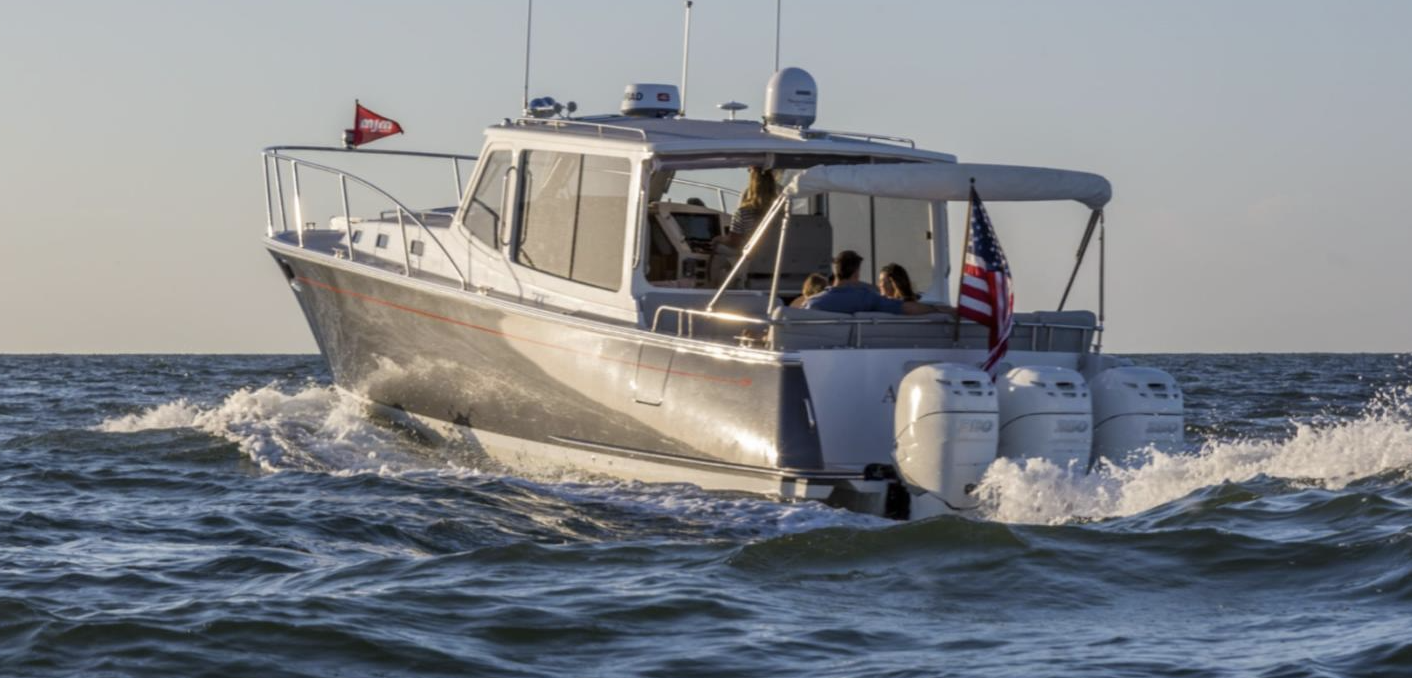
As can be seen in the chart above, the yacht gets her optimum fuel efficiency with Sharrow props at 17-18 mph, something unheard of in most outboard-powered cruisers, as they are struggling to get over their bow wave at those speeds, and usually don’t accomplish it until they are revving 3500 or 4000 RPM. The 43z was able to accomplish the feat at about 2300 RPM.
For boat owners moving down from larger inboard cruisers, getting on plane with a heavy cruiser powered by inboard diesel engines either with straight shafts or IPS pods is generally accomplished in a smooth linear fashion. There is rarely any “hopping up” on plane with a rush of speed, such as the kind experienced in smaller outboard boats. However, with outboard-power cruisers, which is a relatively new genre, the “hop” often does occur, much like that in smaller boats.
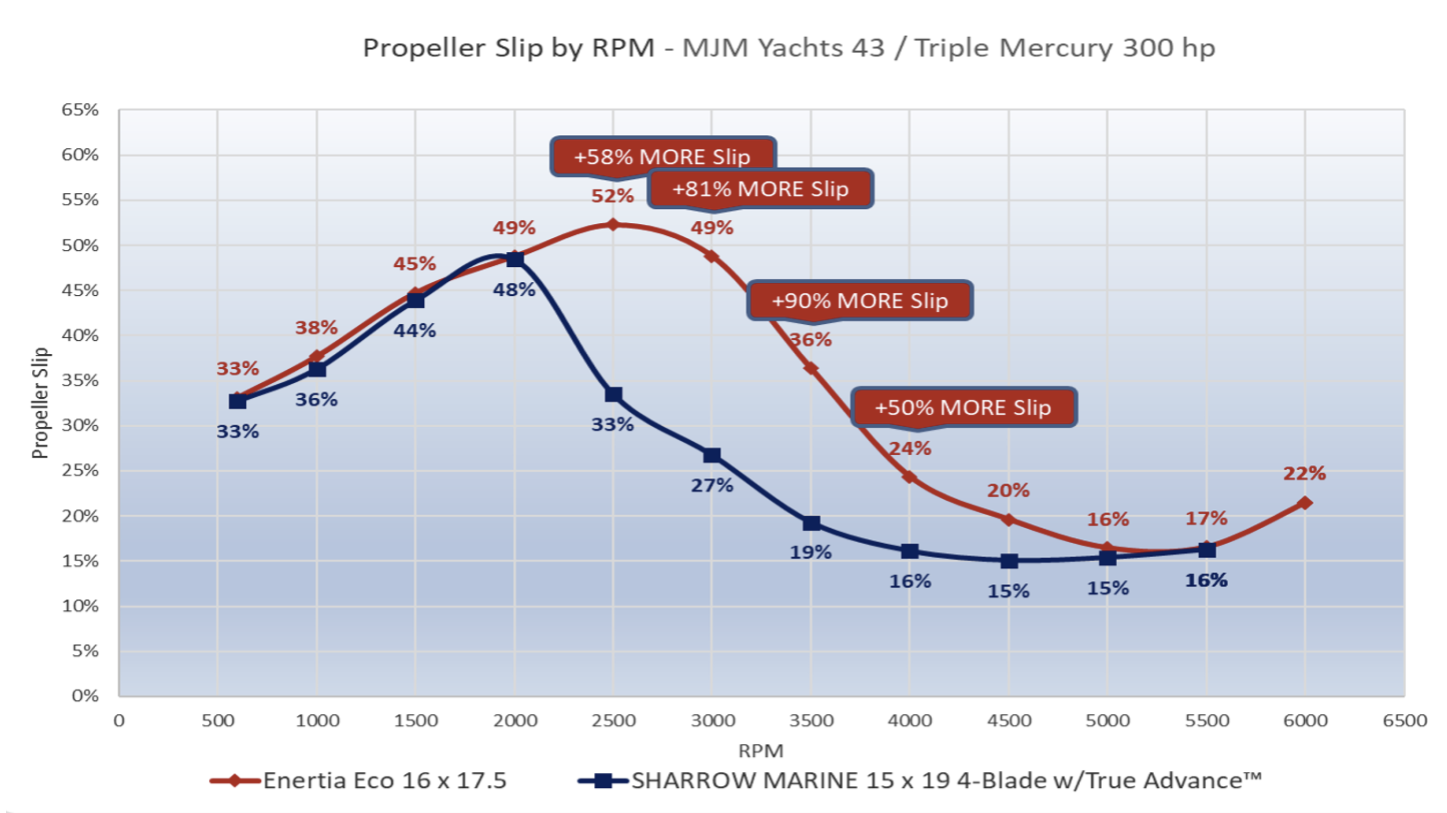
The “Slip” chart above graphically explains what is happening to the two prop designs in the crucial 2000 to 4000 RPM range. Note that the two props are slipping about the same percentage until the boat reaches 2000 RPM, where their paths dramatically diverge. Between 2000 and 2500 RPM the MX4 prop gains greatly in efficiency, “gripping the water,” something that the conventional prop isn’t able to start doing until about 3200 RPM.
With the Sharrow MX4 props, once they “grip” the stern begins to rise and the boat almost levitates up, rather than hopping up over the bow wave. According to Johnstone, the transition was “smooth.”
The “Real Story” According to Johnstone
Johnstone went on to tell us that he considered the real story of the Sharrow props is something rarely talked about — the dramatic grip the Sharrow props have on the water when docking. He said that even with a joystick, the engines responded to the MX4s with an alacrity to joystick commands not seen with conventional props.
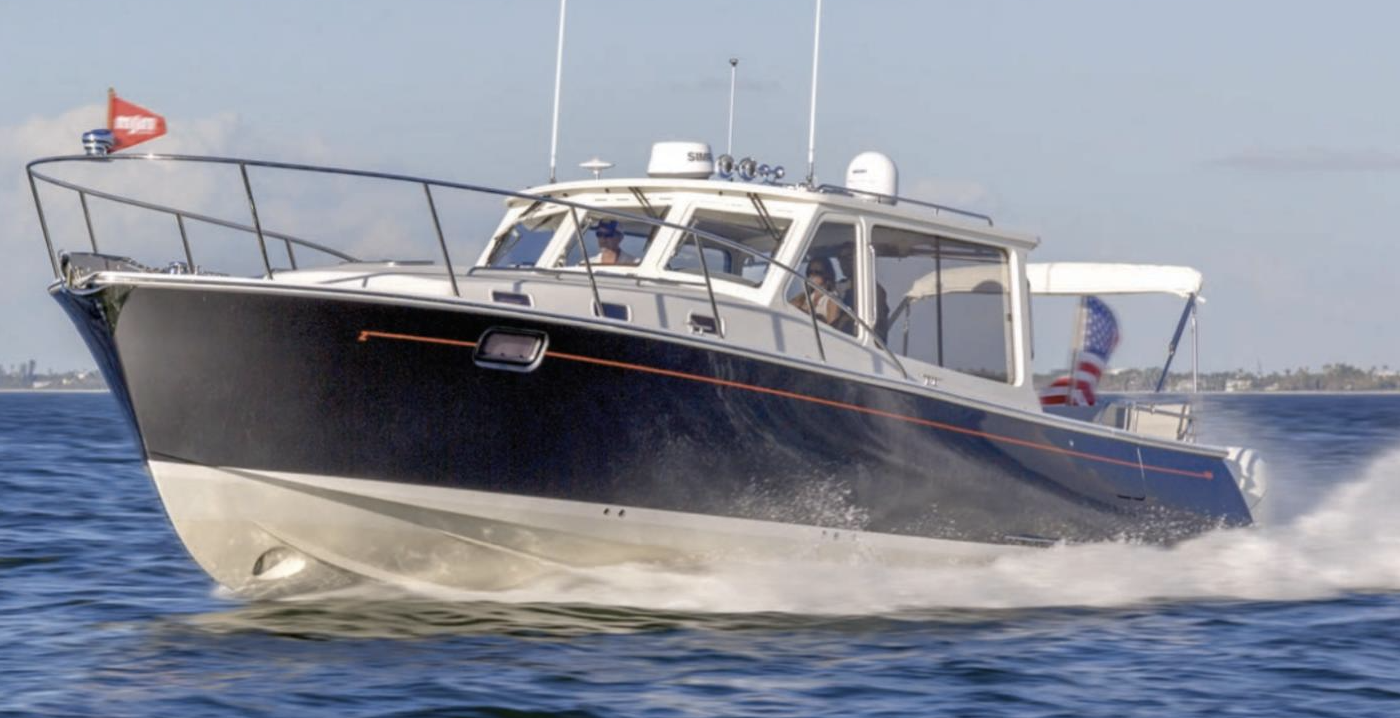
Johnstone also said that while throttling up through the RPM range, vibration was noticeably less with the Sharrow props. Most builders are reluctant to talk about vibration because there is little they can do about it, but the Sharrow props seemed to mitigate it, said Johnstone. He said overall the Sharrow props were “smoother and quieter.”
Sharrow Props: Standard or Optional?
We asked CEO Johnstone if he will make the MX4 props standard or optional for 2025 boats, which he will start building in the summer of 2024. He told us that he definitely planned to make them optional equipment, but hasn't decided whether or not to make them standard. “Most of our customers, particularly in the more expensive boats, want to be ecologically sensitive and don’t mind paying extra for a boat that is more fuel efficient,” he said.
As he thought more about it, he mused, “I think most of my customers will buy it. It’s certainly a breakthrough product, so maybe I’ll make it standard.” The cost for triple Sharrow props will be under $20,000.
“There’s no downside, only upside to the MX4s,” Johnstone said.